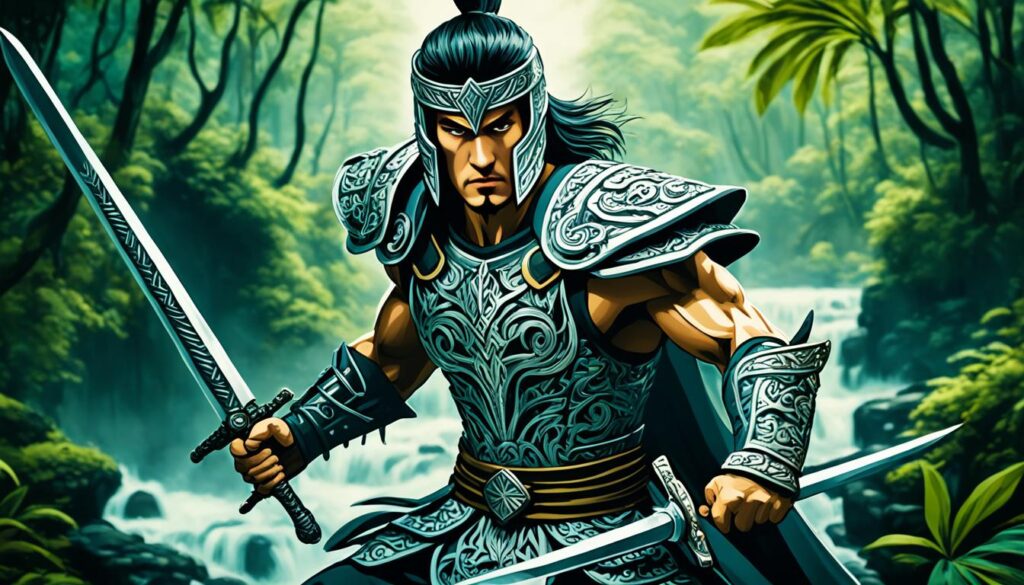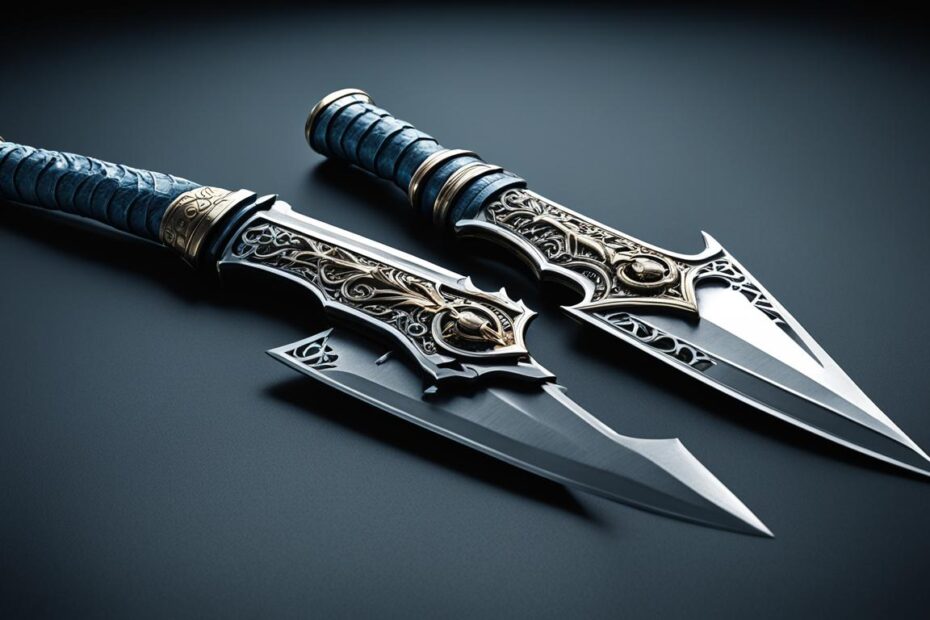Welcome to the fascinating world of Espada Y Daga, a captivating martial art that combines the artistry of sword and dagger techniques. In this article, we will take you on a journey through its rich history, explore the intricacies of its techniques, and delve into its cultural significance in the realm of martial arts.
With a lineage deeply rooted in traditional Filipino weaponry, Espada Y Daga showcases a dynamic and versatile combat style that has stood the test of time. From its origins as a practical form of self-defense to its evolution as an esteemed martial art, Espada Y Daga offers practitioners a unique blend of precision, skill, and strategy.
Throughout history, Espada Y Daga has been passed down through generations, preserving age-old techniques and principles. This art form not only hones physical prowess but also cultivates mental discipline, promoting personal growth and self-awareness.
Join us as we uncover the techniques and skills employed in Sword Espada Y Daga, exploring the footwork, strikes, blocks, and parries that define this captivating martial art. We will also discover its cultural significance, exploring how Espada Y Daga has influenced not only Filipino martial arts but also other combat systems around the world.
Whether you are an aspiring practitioner or simply fascinated by the world of martial arts, get ready to embark on a journey that will deepen your appreciation for the artistry, dynamic techniques, and cultural significance of Espada Y Daga.
The Origins of Espada Y Daga
In this section, we will take a closer look at the origins of Espada Y Daga, a martial art form that combines sword and dagger techniques. To understand the evolution of Espada Y Daga, we must explore its roots in traditional Filipino weapons.
The integration of sword and dagger techniques into Espada Y Daga traces back to the rich history of traditional Filipino weaponry.
The Filipinos have a long-standing tradition of crafting and using a variety of weapons for combat and self-defense. These traditional Filipino weapons, with their distinct designs and functions, formed the foundation for the development of Espada Y Daga.
One of the key aspects of Espada Y Daga is the simultaneous use of a sword and a dagger. The sword, known as the “Espada,” is a long-bladed weapon with a single or double edge. It requires a strong grip and precise control. On the other hand, the dagger, known as the “Daga,” is a short-bladed weapon that complements the sword’s techniques by providing additional versatility and close-quarters combat capabilities.
This integration of sword and dagger techniques created a unique combat system where practitioners could seamlessly transition between both weapons, delivering devastating strikes, blocks, and parries.
The precise origins of Espada Y Daga are difficult to pinpoint due to its long history and various influences from neighboring cultures. However, its development can be attributed to the amalgamation of techniques and strategies from different Filipino fighting styles, including Kali, Arnis, and Eskrima.
Throughout history, Espada Y Daga has been refined and passed down through generations, evolving as a comprehensive martial art form. Its techniques and strategies were honed in battle, making it an effective system for both self-defense and offensive combat.
Understanding the origins of Espada Y Daga provides us with a deeper appreciation for the techniques and strategies employed in this dynamic martial art form. In the next section, we will delve into the specific techniques and skills utilized in Sword Espada Y Daga.

Techniques and Skills of Sword Espada Y Daga
In Sword Espada Y Daga, mastering the specific techniques and skills is essential for honing one’s abilities and achieving proficiency in this dynamic martial art form. By seamlessly integrating sword and dagger techniques, practitioners unlock a world of strategic possibilities and enhance their combat prowess. In this section, we will explore the intricacies of Sword Espada Y Daga, delving into the footwork, strikes, blocks, and parries that make this art form both formidable and captivating.
Footwork: Graceful Movement and Agile Maneuvering
The foundation of Sword Espada Y Daga lies in its footwork, which enables practitioners to maintain balance, agility, and control during combat. The footwork involves precise steps, pivots, and weight shifts to navigate swiftly on the battlefield, creating strategic advantages and opening opportunities for attack or defense.
Strikes: Dynamic and Swift Offensive Maneuvers
Strikes in Sword Espada Y Daga showcase the artistry and effectiveness of wielding both the sword and dagger simultaneously. Practitioners employ a range of strikes, including thrusts, slashes, and cuts, demonstrating precision, speed, and fluidity in their movements. These strikes target vulnerable areas, exploit openings, and overwhelm opponents with a flurry of coordinated attacks.
Blocks and Parries: Deflecting and Countering Opponent’s Attacks
Blocks and parries form a crucial aspect of Sword Espada Y Daga, allowing practitioners to deflect and neutralize incoming strikes. Employing strategic positioning and intelligent blade control, practitioners swiftly intercept and redirect their opponent’s attacks, turning them into advantageous counterattacks. The blocks and parries in Sword Espada Y Daga require expert timing, technique, and anticipation to effectively neutralize threats while maintaining a position of advantage.
Practical Application: Flow and Adaptability
In Sword Espada Y Daga, the mastery of techniques extends beyond individual maneuvers. It is the seamless flow and adaptability that elevate practitioners to new heights. By integrating footwork, strikes, blocks, and parries into a unified expression, practitioners achieve a state of harmonious flow, effortlessly transitioning between offense and defense. This adaptability ensures readiness for various combat scenarios, enabling practitioners to confidently respond to any situation with fluidity and precision.
| Technique | Description |
|---|---|
| Footwork | Graceful movement and agile maneuvering to maintain balance and control |
| Strikes | Dynamic and swift offensive maneuvers using the sword and dagger |
| Blocks and Parries | Deflecting and countering opponent’s attacks with strategic positioning and blade control |
| Flow and Adaptability | Seamless integration of techniques for fluidity and readiness in combat |
Cultural Significance of Sword Espada Y Daga in Martial Arts
Sword Espada Y Daga holds immense cultural significance in the realm of martial arts. This art form, born from the traditional Filipino weaponry, has been embraced and preserved by martial arts practitioners, becoming an integral part of the Filipino cultural heritage.
By mastering the techniques and skills of Sword Espada Y Daga, practitioners not only gain proficiency in combat, but also connect with their roots and preserve their ancestral traditions. The art form embodies the spirit and resilience of the Filipino people, reflecting their history, values, and identity.
The cultural impact of Sword Espada Y Daga extends beyond the borders of the Philippines. Its influence has spread across the globe, inspiring and influencing other combat systems. In the pursuit of preserving the art form’s authenticity, practitioners worldwide have incorporated the principles of Sword Espada Y Daga into their own martial arts practice.
As a result, Sword Espada Y Daga plays a vital role in creating cultural bridges, fostering cross-cultural exchanges, and promoting understanding and appreciation for the diversity of martial arts. Its significance lies not only in its combat effectiveness, but also in its ability to unite people, celebrate heritage, and contribute to the global tapestry of martial arts.
